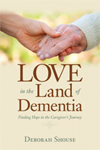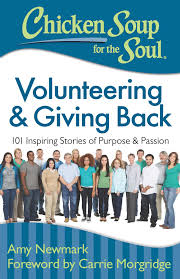Posts Tagged ‘reading’
Connecting Through Reading Together: Wisdom from Anne Vize
Connecting through reading together has always been part of my life, starting with my mother reading me Mother Goose and Grimm’s Fairy Tales. Even when Mom was living with dementia and could no longer track a Shakespearian play or a complicated novel, she loved holding books and she enjoyed hearing lyrical poetry. I was excited when I discovered the work of Anne Vize, Curriculum and education writer, instructional designer, and author of ‘Reading in the moment – activities and stories to share with adults with dementia’ published by Speechmark.
Anne graciously shared her insights for this blog.
Connecting Through Reading Together: Wisdom from Anne Vize
Why is reading together so important?
Reading is a powerful but sadly often forgotten tool for supporting people who have dementia. Sometimes people worry that they might not read fluently enough, or they might make mistakes when they read, and so avoid doing it all together. But people have been reading together throughout time, and the idea of sharing pose, poetry and stories is an integral part of who we are as people. Just because someone has dementia does not mean they are unable to benefit from the joy of sharing a moment in time, with a great book or piece of text.
How do you get started?
Start small and keep the reading sessions to around 10-15 minutes to begin with. Plan ahead so you know what you are going to read and the sort of ‘voice’ you will use to read it. Some texts are more suited to a bouncy, entertaining voice while others are better suited to a slow, lyrical, smooth reading style. Pick the one that suits the piece you are reading, as well as the one that suits who you are as a reader.
How do you set the scene?
Sometimes a sensory experience to begin with can be useful, or a brief discussion about the personal experiences of the listener that might relate to the story. You can make a link with seasonal activities such as Easter, Christmas, Passover, Independence Day or Anzac Day, but be aware that these festive or commemorative times might trigger particular memories for some people that might be unintended. Be sensitive and make sure you know a little about the piece you have chosen and the person you are reading to.
What kinds of stories/books do you suggest?
Read something you are comfortable with. Avoid texts with long, complex sentence structures or multiple characters, as these can be difficult for the person living with dementia to follow. Focus on stories you can read in a single session, with a limited number of characters, and a plot that only moves in a forwards direction (not something that jumps from one period of time to another, as sometimes happens in the short story genre).
How do you use the stories as conversation catalysts?
You can link what you read with a discussion, activity, or sensory experience, if it seems appropriate. For example, you could read the Australian bush poet Banjo Patterson and then combine this with a sensory experience looking at photos of the Australian bush, exploring plants, and leaves outdoors or listening to the sounds that horses hooves might make on the ground. If you are comfortable wearing a bush hat (called an Akubra in Australia) and a check shirt as you read some bush poetry, all the better!
How do you make the experience meaningful and fun?
Use your judgment and knowledge of the person you are reading to. Think about her needs and personal comfort and monitor how she is faring during your reading session. Think about sensory elements in the room that might interfere with your reading, such as outside noises, distractions outside the window, people moving in and out with meals or drinks, and the like. These can all take away from your reading experience.
Reading has a tendency to create a feeling of peace, calm and harmony for people and can be a trigger for more conversation and interaction. Even if the person does not recall the reading experience after you have finished, they will retain the mood and feeling that the piece has created for them and this may well last for long after the actual reading experience has ended.
To learn more about Anne, please visit, https://www.facebook.com/pg/Anne-Vize-Writing-Services-126820110730385/posts/?ref=page_internal

Reading in the Moment: Activities and Stories to Share with Adults with Dementia
Deborah Shouse is the author of Connecting in the Land of Dementia: Creative Activities to Explore Together and Love in the Land of Dementia: Finding Hope in the Caregiver’s Journey.
Doing the Work of Our Hearts
I woke up in the middle of the night with the answer I’d been seeking: I would self-publish the book of essays I had written about my journey through my mother’s Alzheimer’s and I would donate all the monies from the book to Alzheimer’s research and programs.
It was the summer of 2006, and for weeks I’d been wrestling with a question:
Should I seek a traditional publisher or independently produce the book? Both seemed daunting; in the past, I had primarily written books for and with other people and publication wasn’t my problem. But this book, Love in the Land of Dementia: Finding Hope in the Caregiver’s Journey, was the work of my heart, born out of my desire to stay connected with my mother and find the joys and blessings in her experiences with Alzheimer’s. I wanted to share my stories of hope so they might help other caregivers.
“What about donating a portion of the proceeds?” my partner Ron asked. I was already making a marginal living; Ron’s suggestion was practical but I shook my head.
“I think I’m supposed to donate it all,” I told him. “That way, instead of selling a book, I’ll be raising money for a cause I’m passionate about.”
I talked through the details, consulting knowledgeable friends, an attorney and our local Alzheimer’s Association. My mission: to use the book as a catalyst to raise $50,000 for Alzheimer’s. There was one glitch; I estimated the cost of designing and printing could be in the thousands. Where would I get the money? But even though I was often worried about funds, this hurdle didn’t bother me. My intuition was strong. I was supposed to do this and would raid my savings if needed. Ron was excited about the project and pledged to work with me and help me make it happen.
“We will also help you,” my friends Rex and Jane said. They had shepherded several books through production and were extremely savvy. Plus, they wanted to be part of my mission.
Over the next months, Ron and I spent hours with Rex and Jane, working on design, cover, production and print details. Endlessly patient, they were dedicated to creating the book I envisioned. And they kept their fees to a minimum.
When the finished product arrived months later, I felt a sense of pride and completion. The beautiful cover featured one of my mother’s paintings, the type was easy to read, the interior design inviting.
Ron and I had often performed my stories together, and we began speaking and sharing stories from the book with Alzheimer’s associations, healthcare professionals, caregivers’ groups and others. When we traveled, we reached out to Alzheimer’s groups to set up speaking engagements. We were always moved and inspired by the people we met.
“The person with Alzheimer’s is the pupil in God’s eye,” the priest in a fourteenth-century church in Florence, Italy told us.
“Your story is my story,” a man in Istanbul, Turkey said.
“I’ve been caring for my mother for ten years,” a woman from Brooklyn, New York said. “It has been the most meaningful experience in my life.”
“When I learned Mama had dementia, I quit my job in Houston and moved back home,” a woman in St. Thomas, Virgin Islands said. “I wanted my children to know their grandmother in all the stages of her life and I wanted to be here to care for her.”
Sometimes we spoke in front of hundreds of people; other times we talked to groups of ten. When possible, we brought books and people often donated more than the suggested fifteen-dollar price, knowing that all the proceeds went to Alzheimer’s research and programs.
By 2011 we had done it! We had raised $50,000 for Alzheimer’s. But we kept going; we were still learning and growing. The work was healing for both of us and we loved connecting with other caregivers.
In 2012 I was ready to give the book a wider distribution and reached out to Central Recovery Press. They published an enhanced edition in 2013. Today, our fundraising journey continues as we donate a portion of our proceeds to this important cause.
The self-published version of Love in the Land of Dementia served as a catalyst for raising more than $80,000 for Alzheimer’s programs and research. My stories of looking for the blessings in the journey reached thousands of people, fulfilling my goal of making a contribution to the world. And the bonus was that both Ron and I had changed.
By following our intuition and doing the work of our hearts, we became more compassionate, understanding and trusting.
by Deborah Shouse



